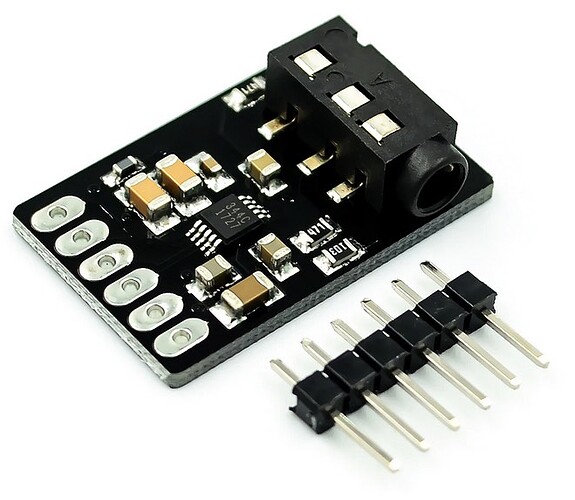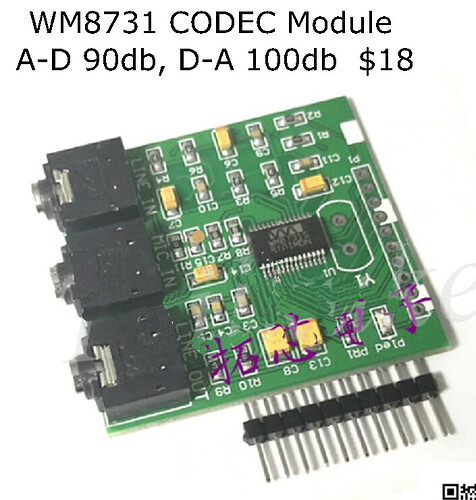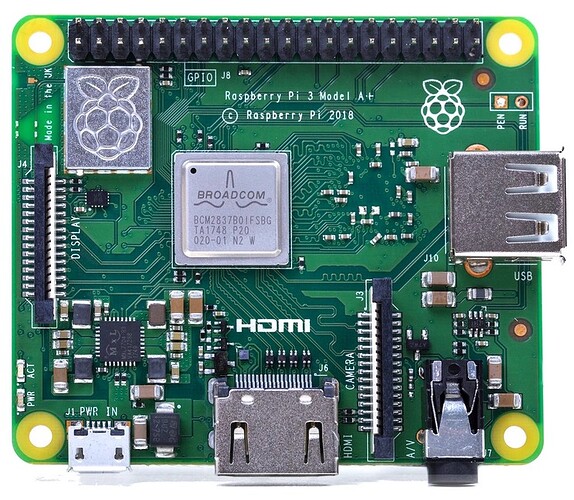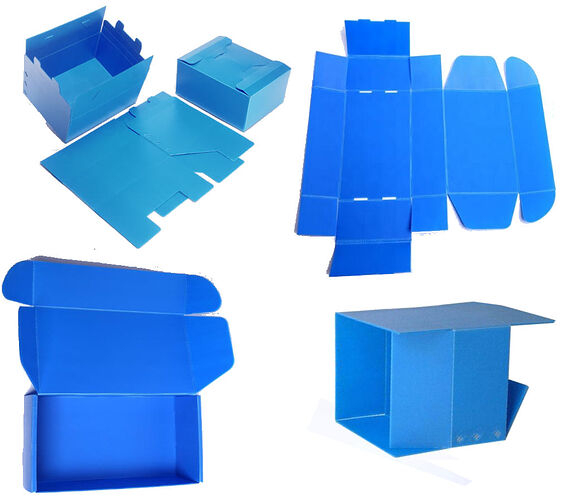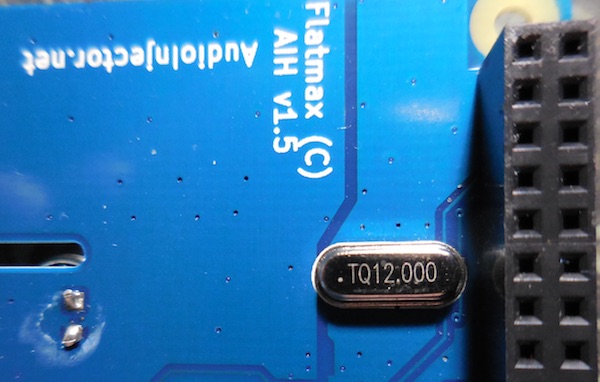I was pondering how a more compact or less expensive Zynthian could be made. Both the examples I considered here would have a remote UI scheme, removing the LCD and encoders from te package for size and cost/complexity reduction.
Working out the communication scheme for both performance controls and Mod editor might be the biggest unknown (at least for me). The ideal thing would use WiFi to host a browser page or communicate with a mobile app for a cell phone / tablet interface. without requiring a router. I have seen code for Pi’s acting as Hot Spots without added hardware and one private network thing that has a fallback when no router is available.
Looking for any example not requiring a router, I ran across this: Auto WiFi Hotspot Switch which can “automatically generate a Non Internet Hotspot Access Point if no network is found”
The Pocket Size Zynthian
It would just be cool to be able to tote a bunch of synths and pedal boards in your coat pocket. Key to such a package is the Pi Compute Module 4 (which I imagine the Zynthian developers have had a hard look at ) availability seems to be the biggest problem at the moment. (2 large supplies had 2 and 4 variants available last week) The box could be smaller than a standard raspberry Pi case.
One shortcut to using this board may be modifying the layout one of the several Host/IO boards being designed (some open source. ) as a jumping off point 7 New Raspberry Pi CM4 Boards for 2021 This same guy looks at 10 more Compute Module accessory boards here.
The smallest, is the CM4Ext_Nano which appears to be a commercial Chinese product being previewed in Github.
(A Pi Zero format Codec board might not stick out too bad from the provided GPIO connector, in a test prototype using the CM4Ext_Nano )
The minimal custom IO board requirement may be the addition of an on board Codec chip and Audio/MIDI connection points. (A refined, mixed audio and digital board layout might not be a first iteration success)
Aside from the shrunk down Pi, making the MIDI and Audio connectors an external break-out connected to a single chassis mounted high density connector (for your other jacket pocket) would help manage limited enclosure mounting area. And would give users different cost options depending on the user’s connection needs. Here’s an example breaout cable that looks like a suitable full feature option:
ALVA Analog breakout cable, balanced (I have seen priced at $44 - $85)
( A cheaper min. breakout cable example could have one std. MIDI input and mono 1/4" input and output connectors)
(The block connector could be something more modern and compact, I’m not sure how switching from a balanced to unbalanced cable would be managed internally)
Breakout cables can be a serious old school, labor intensive undertaking, an alternative could be a breakout box with PCB mounted connectors that docks to the mini Zynthian box.
Here’s another breakout cable form I see around:
The onboard Flash unique to the Compute Module increases the offered variations to 32, from 1 gig ram, no Flash, no Wifi for $25, to 8 Gig ram, 32 gig Flash and Wifi for $90 (some combinations might be obtainable only by OEM makers) I understand the onboard Flash is much like an SD card, with the same vulnerability to data corruption on unexpected power downs. The manual’s, 5.2. Power down sequencing: mentions: a filesystem like btrfs, f2fs or overlayfs ( use raspi-config to enable it ) should be considered (I assume they have better flushing habits, that might be useful for regular Zynthians as well)
The Pi dev. lab. demonstrated 390 MBytes/s SSD writes through a 1 lane PCI connection (replacing the normal USB3 connection circuit) An IO board with a PCI socket could make for a Super Zynthian)
BTW the new 100 pin pair of compute module host connectors are the: Hirose DF40C-100DS-0.4V , Newark has 5k in stock @ $1.83 each. They have a limited insertion cycle like (perhaps 60) a developer may need test strategies to minimize removing/replacing the module. (these replace the 200-pin SODIMM used in previous Compute modules, this new scheme makes for a lower profile assembly)
One alternate form of the onboard UI for the smaller package could use a smaller higher res LCD and a single capacitive input slider taking place of the rotary encoders, requiring an added touch to a corner of the display to indicate the active control input. Some touch sliders have 128 point resolution using interpolation and clever pcb patterns. Here’s an application paper by Atmel the maker of the cheap AVR chips in Arduinos.
A commercial slider offering with 128 resolution.
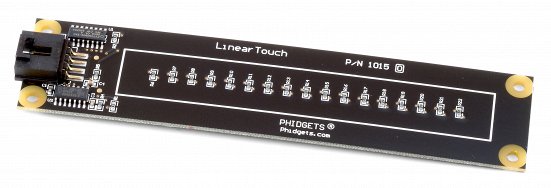
The Low Budget Zynthian
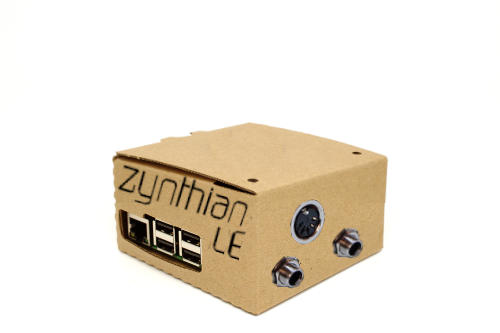
The Covid-19 depression is damaging the sales of entertaining but “unessential” products
(The Guitar Center store chain has declared bankrupsy, presumably due to reduced live band performances) something easier on the budget might be timely.
A bare bones Zynthian might reach a broader audience, and be accessible to people doing street performances for extra cash. One ‘resource costly’ effect, Looping is popular with innovative (2014) solo performers like Ed Sheeran and a violinist I have seen., tight reverb like loops work with live drum patterns. (just brought it up after seeing an old old chip that does real time ogg vorbis compression at about 4/1, extending loop time/layers possibilities) (Real-time software compression reference)
A cheapie Zynthian might not be a great business model, but might raise the brand visibility in the long run)
I did consider this possibility after looking at one of the Google Voice kits ver. 1, I bought at clearance prices. A wider audience might be reached by a Google AIY kit style package.
I just looked at the cardboard ‘case’ included in the kit for the fist time, this is the second such Google kit, the first I believe was “Google Cardboard” VR glasses. It helps to be co-promoted by the Raspberry Pi foundation. the manual is a MagPi Essentials volume. The second generation Google Voice is being distributed by Target stores, and has a Pi Zero included.
I just edited a Google Voice photo to make this Zynthian LE, the cost saving measures include:
- UI moved to the operators Cell phone or Tablet.
- Inexpensive consumer grade Codec.
- Cheaper Raspberry Pi?
- Budget Die Cut, shipped flat package. (simpler than early generation Zynthians)
Example audio boards I just looked at on Aliexpress:
Super Cheap: Cirrus CS4344 I2S D/A 90db S/N buy 3 @ 1.61 ea
.
PCM5102 DAC Board, to the door cost $5.06 ($3.13 when bought 10 at a time)
.(reported on the forum to work with Zynthian)
.
WM8731 24 bit In/Out CODEC Board. $17.58 ($14.22 when delivered 10 at a time)
This uses a consumer product chip with stereo line and Mic inputs and Line and Headphone outputs. The 100db output and 90db input S/N ratings look phenomenal compared to converters from ‘the old days’ (I believe this is the chip used by the Audio Injector in my ‘budget’ Zynthian, and has a zynthian driver.) JUST NOTICED an Audio Injector is Hat at Amazon for less than this board.
(Aliexpress also has lots of Waveshare Hats and Boards using a newer? WM8960 consumer product chip that includes X2 1W speaker outputs. These boards are designed for Alexa like devices, the inputs are tied built in MEMs microphones. (Actually the board version has 1 mic input on the headphone jack, in a cell phone style. It’s a shame this chip actually has selectable stereo inputs, but the schematic shows no connection to the other inputs, perhaps some surgery could provide a usable hat Codec one seller offers for $10.28 to the door. This Hat is also offered on Amazonhttps://www.amazon.com/WM8960-Audio-Module-Raspberry-Zero/dp/B08CCV3XVZ/ref=sr_1_1 for $19.99
These consumer CODEC chips are offered on the Chinese marketplaces for about $2 each, a custom Hat design with MIDI support added, would provide a more foolproof Kit on the Google AIY level.
The Pi 3 Model A+ gets a physically smaller package by lopping off some connectors, and saves further cost with only 0.5 gig of ram. It is $10 cheaper than the Pi 3 Model B+, but still has the 64 bit multi core processor more powerful than a Zero. The limitations might be appropriate for a teaser “LE” version.
A step up from a cardboard case, is to use die cut Corrugated Plastic sheets. This is material used for some poster and sign boards.
The material is available in about 2 to 16 mm thickness.
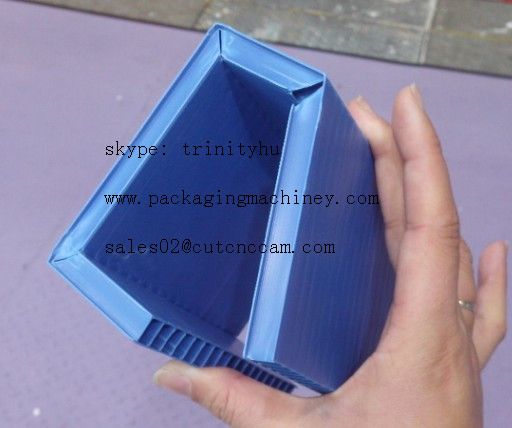
Notice this 8-10mm material has 45° cuts at the folds.
Looks like around 4-6mm might be OK with panel mount components.
CORRUGATED PLASTIC (POLYPROPYLENE) charity box design
Corrugated Plastic sheets, 2 small samples, from Amazon $3.17 + $3.29
I fell into the habit of getting carried away after spending some months at Helpful Engineering contributing research and minor prototyping on a few projects, where they are wokring on open source solutions for the Covid problem, from masks to Ventilators. It ended for me after the Slack collaboration platform trial ran out. (The woman I am seeing on the page is wearing a ship-flat die cut face shield designed at MIT, a good item to donate to hospitals in bulk)



